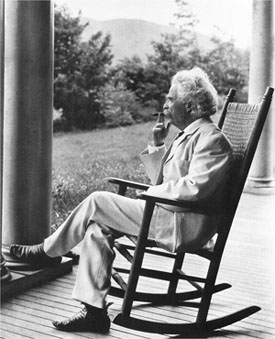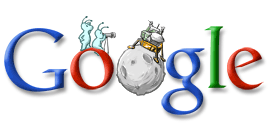Journalism 101: The Art of the Quote
None of this is unique to me, so if I sound like I’m breaking my arm trying to pat myself on the back, I’m not. I just have a first-person source (me) that can speak about this issue.
When I was in college, after realizing that I didn’t want to be a disc jockey (the lonely little off-campus WUVT studio smelled like stale coffee, stale cigarettes and stale sweat and was a lot lonelier than I had imagined), I ended up in an Electronic News Gathering class. ENG was just a fancy way of saying “hey, kids, let’s put on a weekly cable news show.” It was, for lack of a better way of phrasing it, when the career of journalist “clicked” for me. I would sling my camera over my shoulder, tuck my microphone under my arm along with my tripod, and suddenly I could go almost anywhere and be a witness to almost anything. Through the lens, I had a new way of looking at the world, one that forced me to look at the world with new eyes and find that everyone has an interesting story to tell. It was a mind-blowing realization. (And that was just the cut form of the journalism drug — even a whopping two minute story is nothing like the 100 inches I can devote in print to a really complicated and meaty news story when necessary.)
But the learning process wasn’t entirely smooth. My teacher, Steve Anderson, an Emmy award-winning weatherman and environmental reporter from Denver, regularly fussed at me for not shooting “stand-ups” when I was playing a one man band of reporter-photographer-editor. These are a staple of television news where the reporter is filmed standing in front of something (hopefully relevant to the story) and identifies where they’re standing, who they are, and who they’re reporting for. I simply wasn’t interested in doing this. It wasn’t because of a lack of ego (lordy, the ex-girlfriends can testify about that one), but rather, I didn’t want to waste what little time I had in the story on it. A long news story is two minutes. Pick a random news story from Yahoo! News and read it at a measured pace: You won’t get through it in two minutes. You probably won’t even get to the “meat” of the story. So sacrificing 5 seconds of a story that might only be 60 seconds just so I could say my name and that I was in Blacksburg seemed wasteful in the extreme.
Because, here’s the thing: The audience doesn’t give a crap. The ability to report live from across the planet or even next door is no longer a novelty, and it’s no longer a bragging point that needs to be dangled in front of the audience. This is especially true for live-on-tape footage shot just outside the dorm room the audience will be in when they watch it. Standing outside West Eggleston Hall isn’t an impressive feat to a person who lives there. (Obviously, Anderson was right to insist I learn how to do them, though, since it’s what employers would want me to know how to do. The debate over whether to do them didn’t mean I should be unprepared for the working world.)
And this principle holds true for print journalism as well: The audience wants to read the story and get the information. With rare exceptions, they do not care about what a dazzling writer you are, especially since most journalists aren’t. When reading a story, they want the information clear, they want it succinct (but still complete enough to understand the facts of the case) and they want to get a sense of what it was like to be on the scene themselves. While doing all of that well requires the writer to exercise his or her craft, it also requires knowing to get out of the way when needed.
Which brings us to the art of the quote. I quote early, I quote often, and nine times out of 10, I close with a quote. I paraphrase only when the subject does not explain things clearly (people don’t speak in complete sentences, and sometimes, even a clear explanation can’t be used as a quote). Getting the original source speaking let’s the reader feel like they were really there, without all that tedious going to meetings or standing around waiting for something to happen. And quotes impart things that a reporter is unlikely to mention in an average length story. Is that city councilman a good ole boy? His quotes will reflect that, especially if the reporter accurately represents the way the councilman phrases things.
 Some newsrooms clean up quotes to the point of fixing grammar, removing dialect and so on. While this normally stems from noble intentions — “let’s not make people not take so-and-so seriously, just because she doesn’t have a great education” — it fails to accurately represent the person doing the speaking. There was a reason that journalist Mark Twain used dialectic speech in “Huck Finn“: Understanding who the characters were included letting readers hear how they spoke.
Some newsrooms clean up quotes to the point of fixing grammar, removing dialect and so on. While this normally stems from noble intentions — “let’s not make people not take so-and-so seriously, just because she doesn’t have a great education” — it fails to accurately represent the person doing the speaking. There was a reason that journalist Mark Twain used dialectic speech in “Huck Finn“: Understanding who the characters were included letting readers hear how they spoke.
Now, just as people don’t tend to speak in complete sentences, they often aren’t terribly concise. So reporters use several tricks to form better quotes, especially cutting apart relevant sentences and stitching them together with ellipses (“those dots”: …). Obviously, this has to be done prudently: If you change the meaning of what someone said, or misrepresent how they said it, you’re not only violating the trust of the readers, you’re risking a backlash from the source. I know more than one source who won’t talk to certain reporters because of the risk of getting misquoted. So it’s a tightrope to walk, which is why many reporters decide to just paraphrase instead.
But paraphrases can never approach the power of a good quote, in my mind. Here’s a good example from a recent story by the Daily Press’ Gretchen Losi:
Walking through the door, Martha Weis followed her nose to the samples of warm, homemade bread from Shelly’s Place.
“Oh man, this is so good,” Weis, of Hesperia, said. “Mama ain’t got nothing on this stuff.”
Weis then spent another couple of hours visiting the vendors and nonprofit groups exhibiting at this year’s Hesperia Community Expo at Sultana High School.
It would have been possible for Gretchen to paraphrase Martha Weis:
Weis enjoyed a piece of bread from Shelly’s Place.
That’s fundementally the same thing as the quote she used, but by using the quote, Gretchen showed us both how much Weis enjoyed the bread and gave us a little feel for how Weis talks, at least when she’s eating tasty fresh baked bread. Gretchen’s a good writer, and in this case, she showed it by knowing when to get out of the way and let a source tell the story even better than she could.


